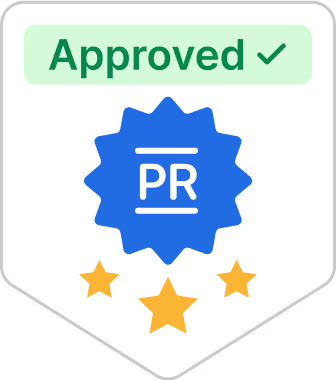Limited Partnership vs Limited Liability Partnership Differences

Limited partnerships (LPs) and limited liability partnerships (LLPs) both refer to businesses that are owned by more than one individual. They are subcategories of general partnership businesses in which owners enjoy a certain amount of liability protection.
But there’s a lot that differentiates LPs and LLPs from general partnerships, and a lot that distinguishes them from each other. Are you wondering about the difference between LP and LLP? Read on to find out more.
What is a limited partnership?
So, what is a partnership? A limited partnership is a type of company that has multiple owners. In an LP, at least one owner acts as general partner, and the other or other business entity partners act as limited partners.
But what do those terms mean?
Well, for the general partner, it means:
- Taking an active role – General partners are responsible for managing the business’s day-to-day operations and for all business decisions.
- Unlimited liability – General partners are also personally responsible for business debts. This means that not only their business investment but also their personal assets can be forfeited to pay business debts.
Limited partners, on the other hand, enjoy far greater liability protection—they can’t lose more than their personal contribution to the company and their personal assets are safe.
That said, they also play far less active roles within the company. In fact, limited partners must be diligent about limiting their participation or they could risk losing their diminished liability.
What is a limited liability partnership?
A limited liability partnership describes a business owned by more than one person, none of whom have unlimited liability for business debts. Instead, each limited partner’s liability is limited to the amount of their personal investment in the company.
Under LLPs, each limited partner typically plays a fairly active role in business operations. However, each individual partner is protected against the business debt of the other partners.
LLPs are a favored business structure for many businesses in professional fields, such as:
- Lawyers
- Architects
- Accounts
LLPs allow individual business owners to share business costs, expenses, and resources, yet offer individual protections.
How are LPs and LLPs formed?
Like general partnerships or even limited liability companies, LPs and LLPs are formed at the state level. The partnership agreement process for registering your lp vs llp will vary depending on the state you live in, so it’s a good idea to check with your secretary of state’s office for specifics.
That said, there are some aspects you can expect to remain similar across state lines.
- Check eligibility – Check if your business structure meets your state’s eligibility requirements. Many states reserve LP and LLP status to only certain kinds of businesses. In a lot of states, this comes down to whether or not your professional service business requires a license, but certain states have far stricter requirements.
- Give your LP or LLP a name – Check your state’s business database before you get a heart set any particular name—it has to be distinct from other businesses in your state.
- Appoint registered agent – The registered agent is the person who will manage all communication between your business and the state.
- Create partnership agreement – This document includes many important details about your business, such as how it’s structured, individual partner rights and responsibilities, how profits are divided, and the process for adding new partners, among many others.
- File state forms – File either your Certificate of Limited Partnership or Certificate of Limited Liability Partnership with your secretary of state’s office.
Once your application is approved, you’ll also need to obtain an Employer Identification Number from the IRS. You’ll also need to acquire any business permits or licenses that might be required by your state.
How are LLPs and LPs structured?
You may be wondering about how are partnerships taxed or structured. Although the process for forming a limited partnership vs limited liability partnership might be similar, they each offer different potential business structures.
- Limited liability partnerships – Under the limited liability company model, no single LLP partner is responsible for making management decisions. Instead, all small business partners perform managerial tasks and take part in decision-making.
- Limited partnerships – In limited partnerships, the general partner performs all management functions. Limited partners have almost no decision-making power.
To avoid having to set up a partnership in person, simply fill out this EIN form to apply for a partnership online right now.
Sources:
- NOLO. Limited Partnerships and Limited Liability Partnerships. https://www.nolo.com/legal-encyclopedia/limited-partnerships-limited-liability-partnerships-29748.html Fundera. Limited Liability Partnership: What is an LLP and How to Form One.https://www.fundera.com/blog/limited-liability-partnership























